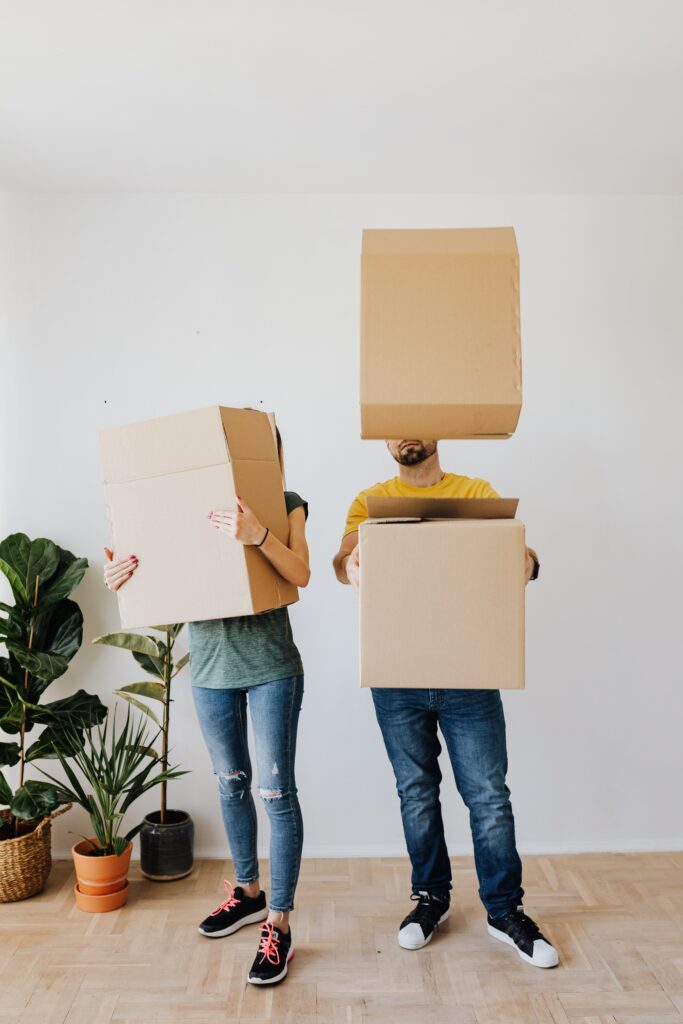Moving to a new place can be a thrilling experience—it’s an opportunity for growth and change. But alongside the excitement, it can be a time of high stress as you figure out the logistics of the move.
One area that often causes anxiety is the actual process of packing. Whether you’re a first-time mover, a new homeowner, or just need a refresh on proper packing practices, this comprehensive guide has got you covered.
By following these detailed packing tips and tricks, you’ll not only ensure your belongings are well-cared for but also streamline the entire process to make your move as smooth as possible.
From the first step of creating a checklist to the final step of settling into your new home, we’ll walk you through each phase of packing with expert advice and an unwavering commitment to accuracy and detail.
Ready to embark on a stress-free packing journey? Let’s dive in.

Planning and Preparation
Create a Moving Checklist
Before you start throwing your entire home into boxes, pause and plan ahead. A comprehensive moving checklist should be your first item of business.
Think about everything you need to do leading up to the move, from scheduling professional services to changing your address on legal documents.
How to Create Your Checklist:
- Begin at least two months before your moving day. Break down tasks into weekly or daily to-do lists to avoid overwhelming yourself.
- Prioritize time-sensitive tasks such as cancelling and transferring utilities, forwarding your mail, and contacts with other service providers.
- Utilize digital tools like moving apps or simple spreadsheets to stay organized and easily track your progress.
Sort and Declutter Belongings
Moving gives you the perfect opportunity to assess what you truly need. The fewer items you move, the less chaos you’ll experience on the other side.
A Five-Step Declutter Plan
- Start with one room at a time and create a “keep,” “donate/sell,” and “discard” system.
- Be ruthless about the things you haven’t used in the past year. If they don’t hold sentimental value or a clear purpose in your future home, it’s time to let them go.
- Make quick decisions—lingering too long over an item can slow down your progress and lead to second-guessing.
Gathering Packing Supplies
With your checklist complete and your belongings sorted, it’s time to think about what you need to pack. Ensuring you have the right packing materials is crucial to protecting your items in transit.
Essential Supplies List:
- Sturdy moving bags or boxes in various sizes.
- Packing tape and dispenser.
- Bubble wrap for delicate items.
- Packing paper or newspaper to cushion items.
- Markers for labeling.
- Heavy-duty trash bags for things that don’t need a box.
- Collecting these supplies ahead of time will save you from last-minute scrambles and unexpected trips to the store on moving day.
Room-by-Room Packing Tips
Each room of your home presents its own set of challenges when it comes to packing. Here’s how to tackle the most common areas.
Kitchen Packing Hacks
The kitchen can be the most time-consuming room to pack due to the number of small items and the importance of careful packing to avoid damage.
Strategic Kitchen Packing Plan:
- Start with non-essentials like serving platters and specialty cookware.
- Use dish boxes for your breakables – these are double-walled boxes designed to safely transport dishes and glassware.
- Pack knives carefully by taping together or using blade guards.
Bedroom Packing Tips
Pack your bedrooms last, as you need them functional up until the last day. Sort through clothes and accessories to pack only what you need.
Packing Dressers and Closets:
- Wardrobe boxes can keep your hanging clothes neat and pressed.
- Use vacuum-sealed bags for seasonal items to save space.
- Keep essentials in an “open-first” box, so you can access toothbrushes, pajamas, and other crucial items easily.
Living Room and Dining Room Guidelines
Common areas are where you’ll have the bulk of your furniture and decorative pieces.
Furniture Disassembly:
- Take apart furniture that can be disassembled to save space and avoid damage.
- Label all screws and hardware and tape them to the underside of the piece or in a small bag to ensure they’re easy to find later.
- Electronics and Artwork:
- Take photos of electronics’ set-ups to make re-installation easier.
- Use mirror cartons for artwork or large flat-screen TVs to protect them from scratches.
Bathroom and Toiletries Organization
Bathrooms are the smallest yet often the most cluttered rooms.
Packing Toiletries Diplomatically:
- Use toiletry bags or organizers to prevent spills and leaks.
- Only pack products with lids that close securely and pack them in zipper bags for extra protection.
- Keep cleaning supplies separate and clearly marked to use right after you’ve cleaned your old space.
Fragile and Valuable Items
Certain items require special attention. Here’s how to ensure your most precious possessions make it to your new home in one piece.
Packing Delicate Items Safely
Anything that’s breakable or has sentimental value should be packed with care.
Delicate Packing Protocol:
- Cushion breakables with plenty of wrapping or soft items like clothes and towels.
- Pack electronic devices in their original boxes, if possible, or use plenty of bubble wrap.
- Fill empty spaces in boxes with packing paper or bubble wrap to prevent items from shifting.
Protecting Valuable Possessions
High-value items such as electronics, jewelry, and important documents require extra security.
Valuables Protection Plan:
Consider transporting valuable items like jewelry yourself, rather than packing them with the movers.
•Use anti-static packing materials for electronics to avoid damage from static electricity.
•Keep important documents like medical records and passports in a fireproof container.
Labeling and Organization
In the chaos of a move, good labeling is your best friend. It helps with unpacking and ensures that nothing is left behind.
Labeling Boxes for Easy Unpacking
A well-labeled box can easily be placed in the right room, so you can unpack efficiently.
Smart Labeling Techniques:
- Label each box with the room it’s going to and a brief description of the contents.
- Use color-coded labels for different rooms for quick visual cues.
- Number your boxes and keep an inventory to ensure nothing goes missing.
Keeping an Inventory of Packed Items
An inventory can be a lifesaver if anything goes wrong during the move or something is misplaced.
Inventory Management 101:
- Use a notebook or spreadsheet to list each box’s number and contents.
- Take pictures of high-value items and keep notes on their condition.
- Cross items off your inventory as you unpack in your new home.
Moving Large Items
Moving large items requires strength and often special equipment. Don’t hesitate to ask for help or hire professionals, especially for heavy or cumbersome pieces.
Tips for Moving Furniture
Most furniture can be moved easier if disassembled first.
Move Smart with Furniture:
- Use sliders to move heavy furniture across the floor without damaging it.
- Wrap furnishings in moving blankets to prevent scuffs and scratches.
- Load furniture onto dollies or secure straps to stabilize them during transport.
Hiring Professional Movers for Heavy Equipment
Sometimes it’s best to leave it to the pros.
Vetting Movers:
- Get quotes from several moving companies and ask for referrals from friends and family.
- Ensure the company is licensed and insured.
- Get a written contract that outlines all services and costs.
Car Shipping and Delivery Options
If you’re embarking on a cross-country move and unable to drive, car shipping offers a dependable solution. By safeguarding the security of your vehicle throughout the journey, they provide you with a sense of tranquility and confidence.
Car Shipping Logistics:
- Choose an auto transport company that is reputable and has a good track record.
- Research prices to get the best deal for your car’s size and distance traveled.
- Ask about insurance coverage in case of any damages during shipping.
Car Shipping Considerations:
- Get several quotes and read reviews before choosing a company.
- Check insurance coverage and consider purchasing additional insurance for peace of mind.
Plan ahead – car shipping can take up to a month, so book early.
Unpacking and Settling In
Don’t rush the unpacking process. Take it one step at a time, room by room.
Unpacking Strategies to Minimize Stress
Unwrapping the pieces of your life in your new space can be just as rewarding as discovering a new hobby.
Room-by-Room Unpacking Techniques:
- Start with areas you’ll need immediately, like the bathroom and the kitchen.
- Unpack room by room to avoid getting overwhelmed with the entire house’s worth of boxes at once.
- Take breaks and celebrate small victories as you make progress.
Setting Up Essential Areas First
Once your bed is set up and you can brew a cup of coffee, your new place will start feeling like home.
Establishing a Sense of Home:
- Assemble and make the beds as soon as possible on the first night to ensure good sleep.
- Set up your technology hub to restore connectivity with the outside world.
- Unpack an “essentials” box that should contain basic tools, cleaning supplies, and important documents.
Tips for Making the New Place Feel Like Home
After all the hard work, it’s time to revel in the joys of making your new place uniquely yours.
Personal Touch Tips:
- Frame and hang familiar pictures to create a sense of continuity with your old home.
- Unpack and organize belongings right away to avoid the sense of living out of boxes.
- Explore your new neighborhood to start building a sense of community.
Conclusion
Packing and moving can be a daunting task, but with proper planning and a meticulous approach, it’s entirely manageable.
By following this ultimate guide, you’ve taken the first step towards a successful and stress-free transition to your new home.
Remember that each detail you manage is a step closer to settling into your new and exciting life chapter, so take a deep breath, and embrace the adventure. Happy moving!






